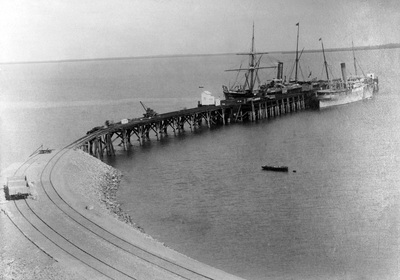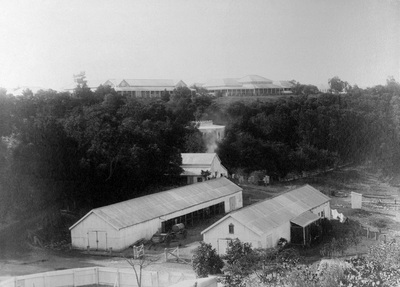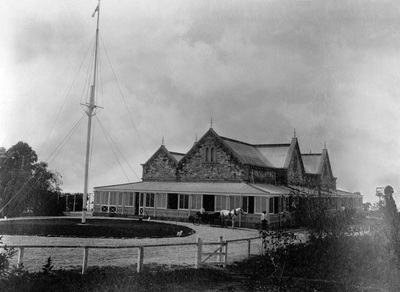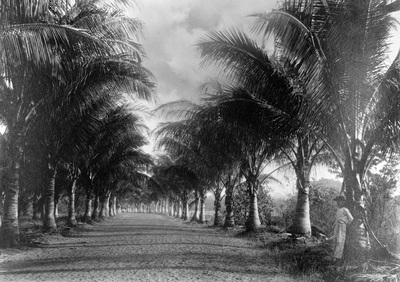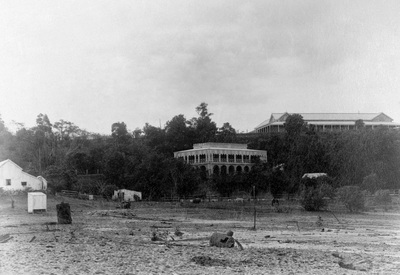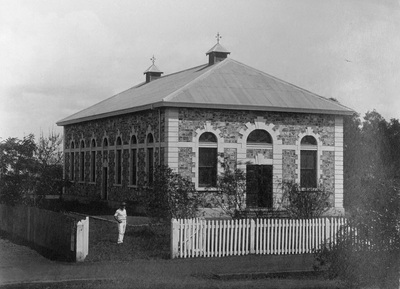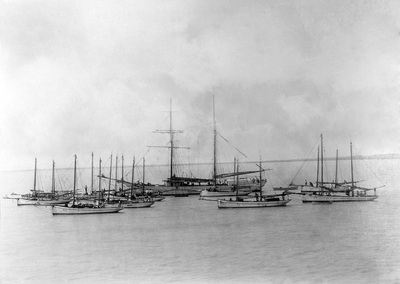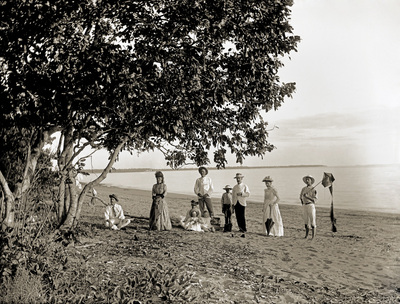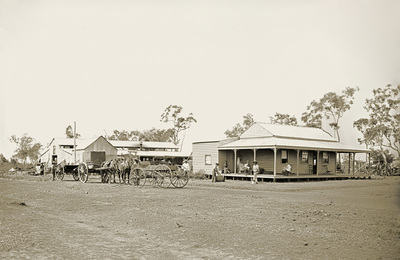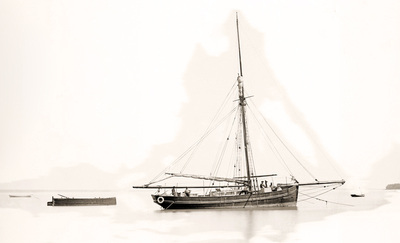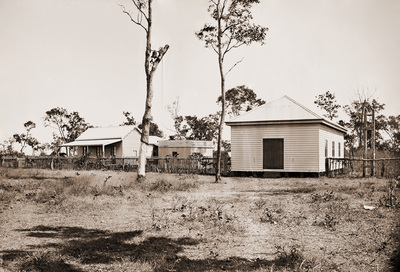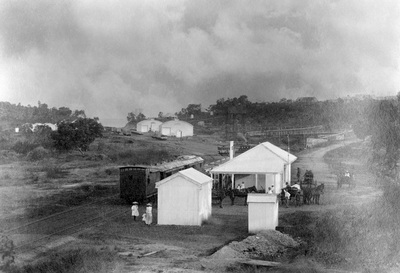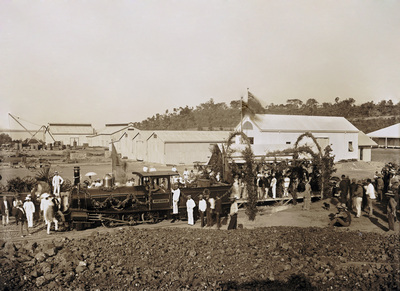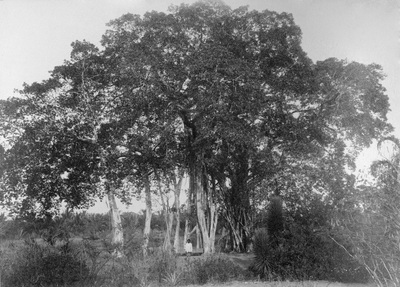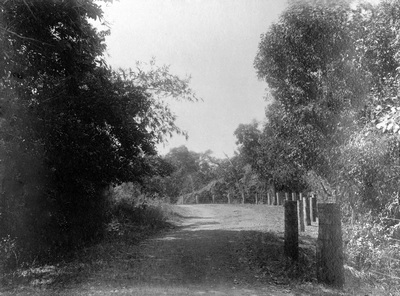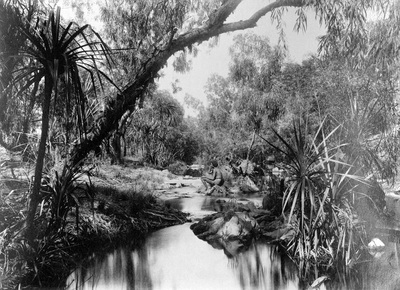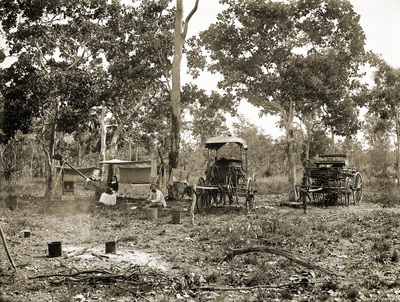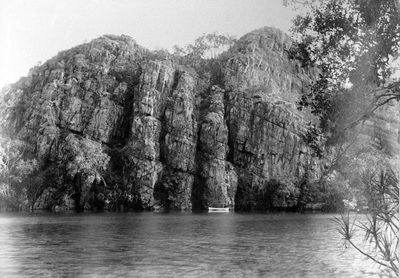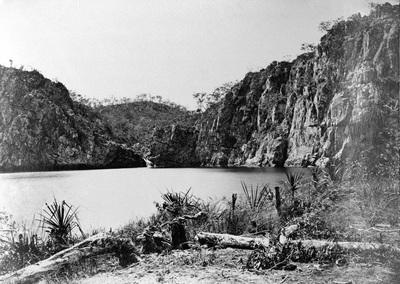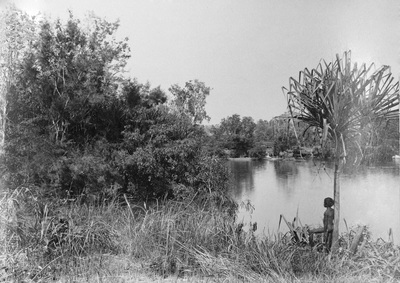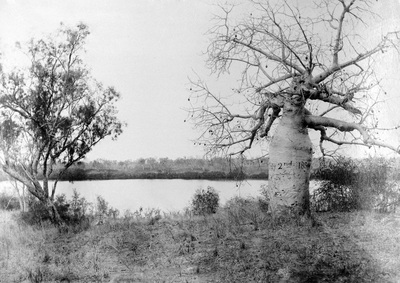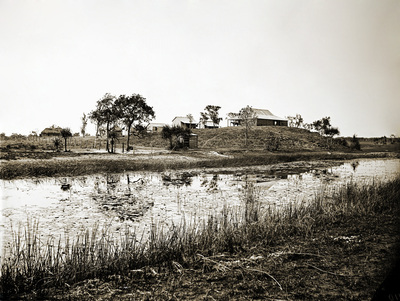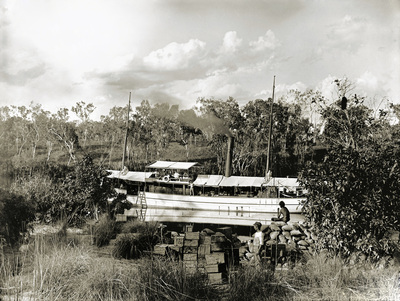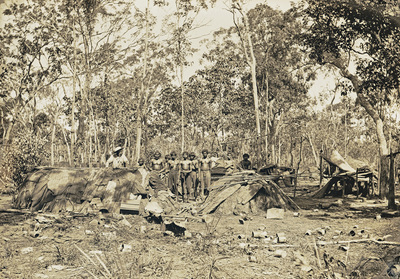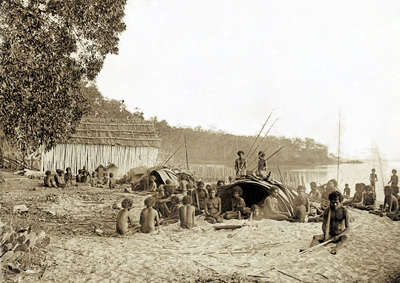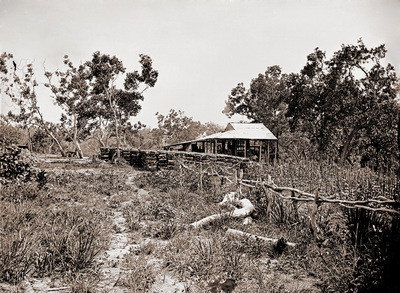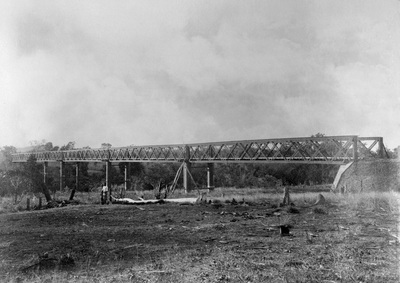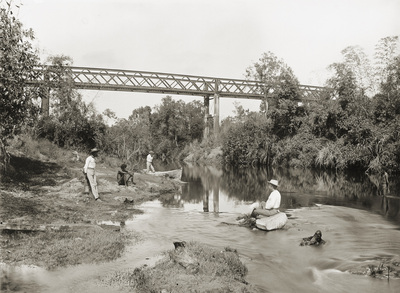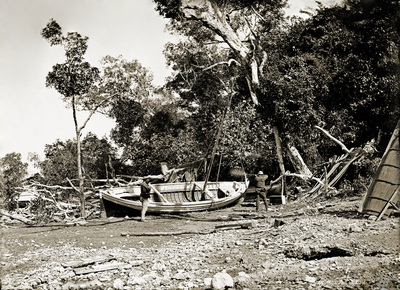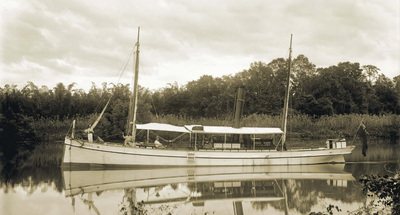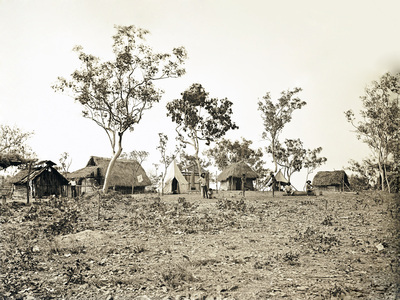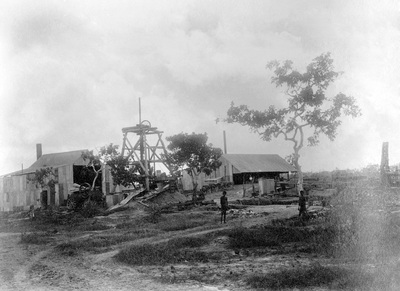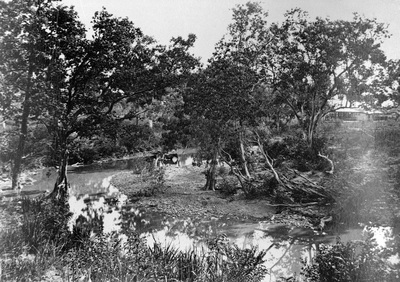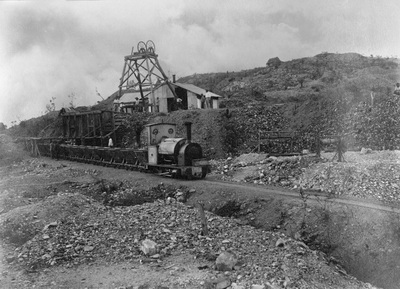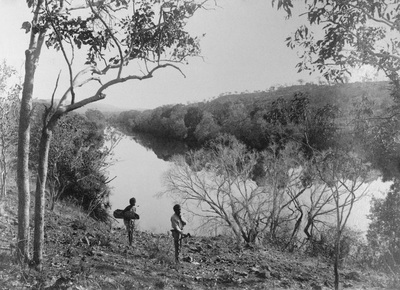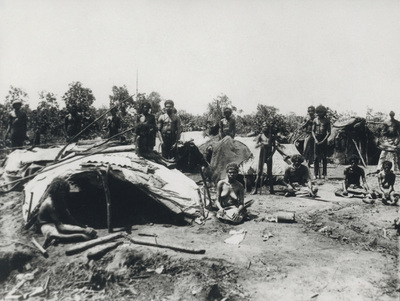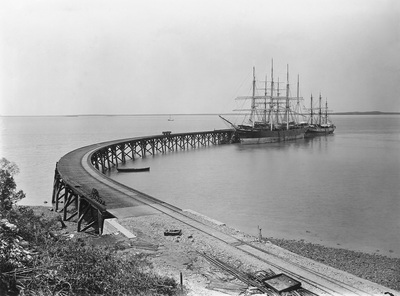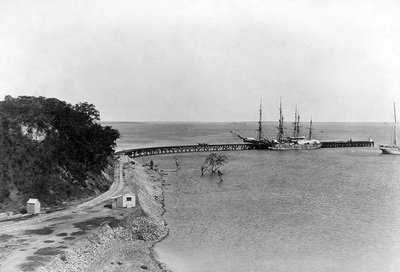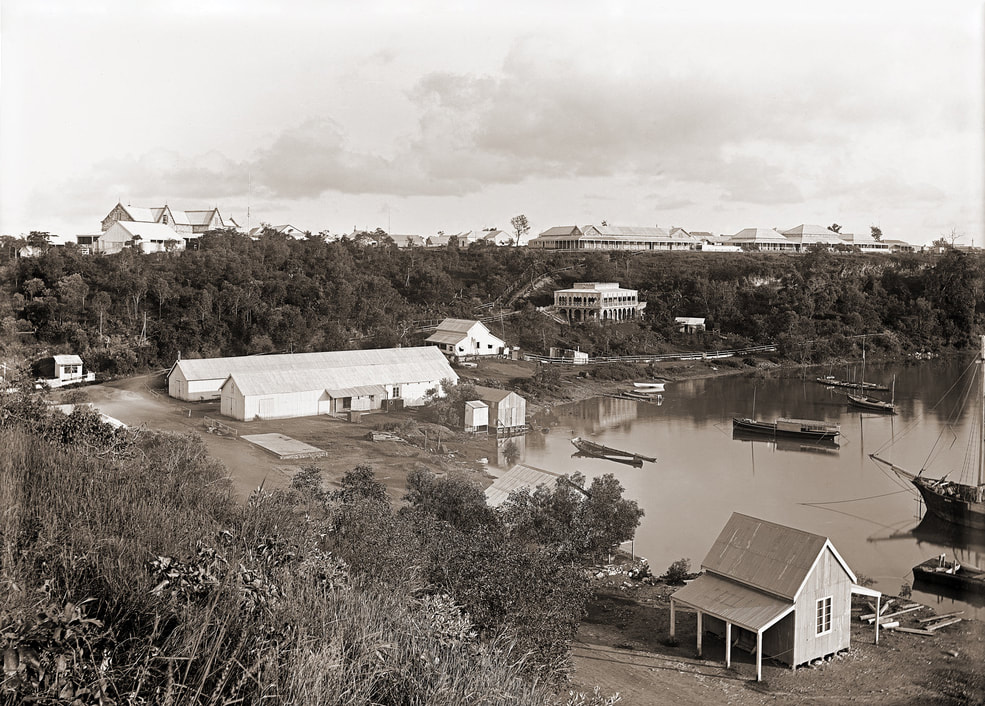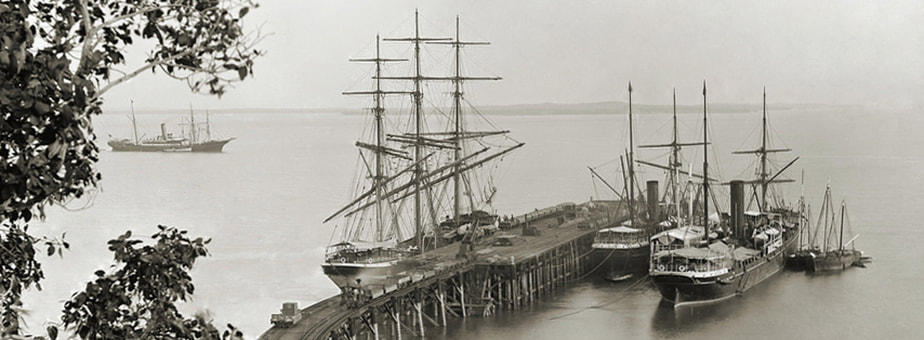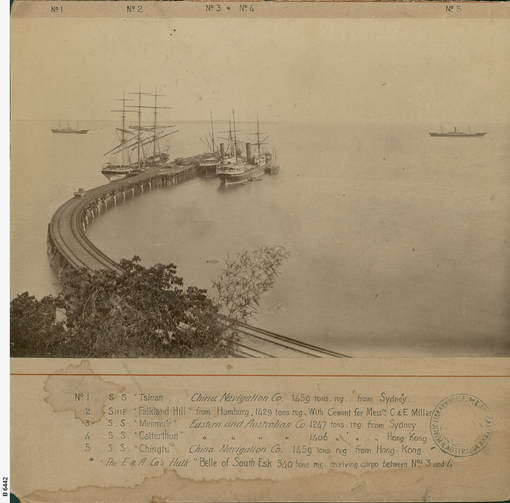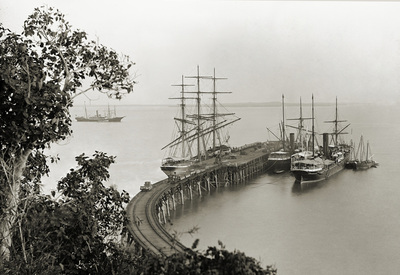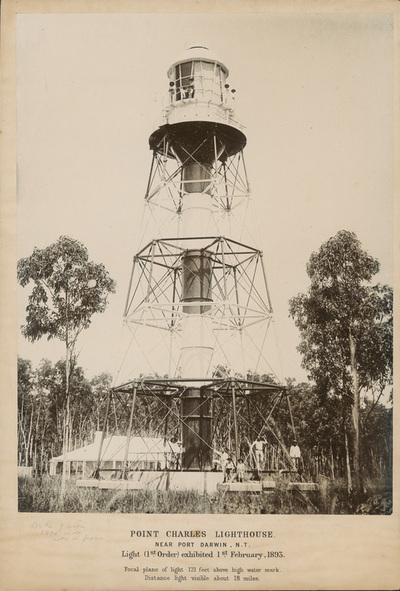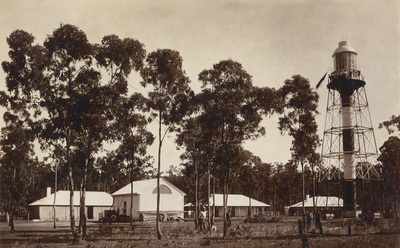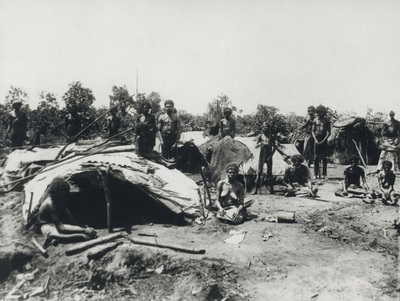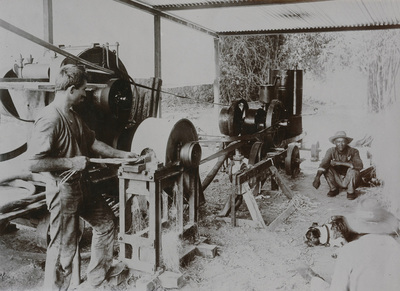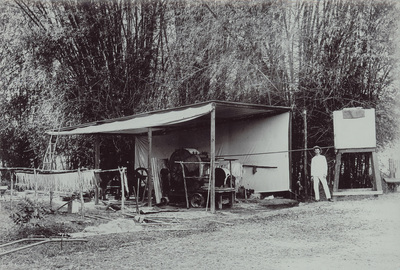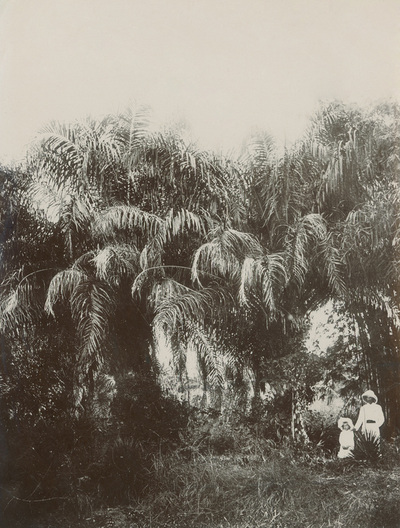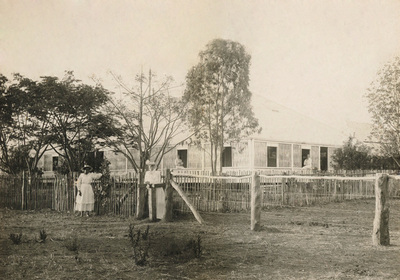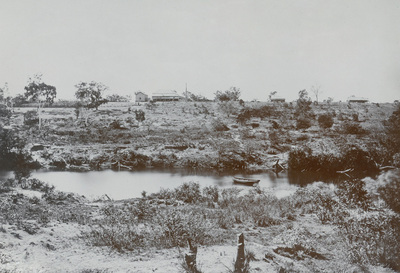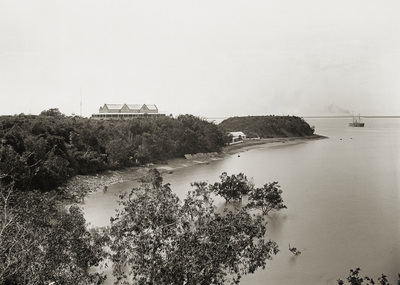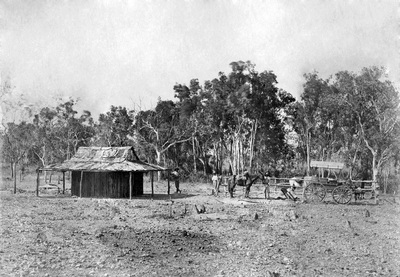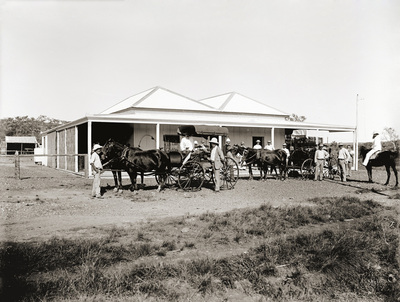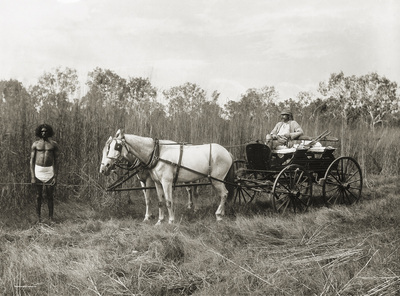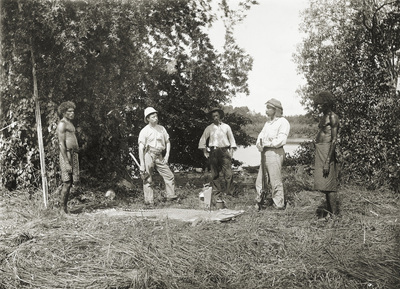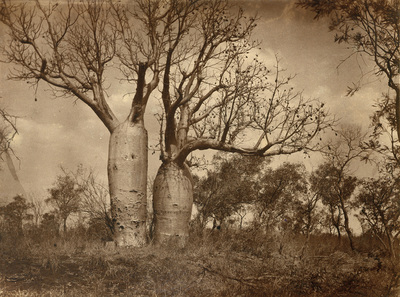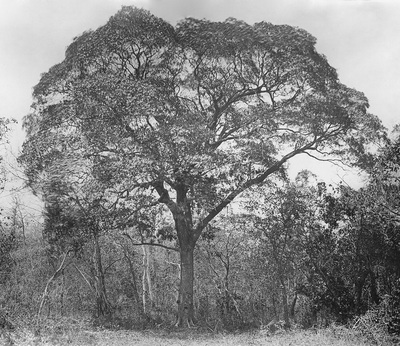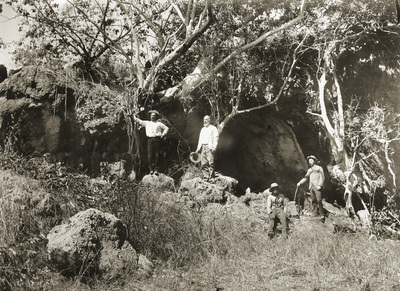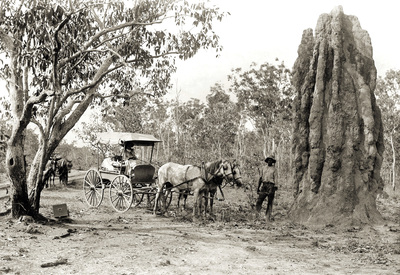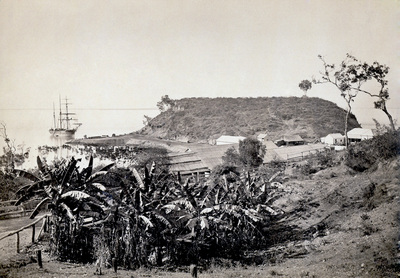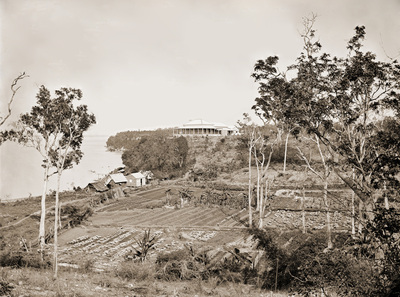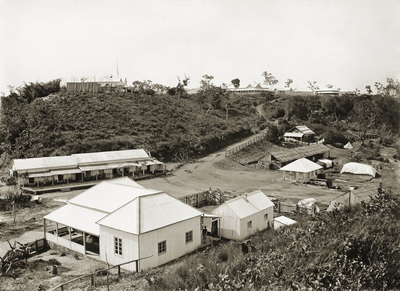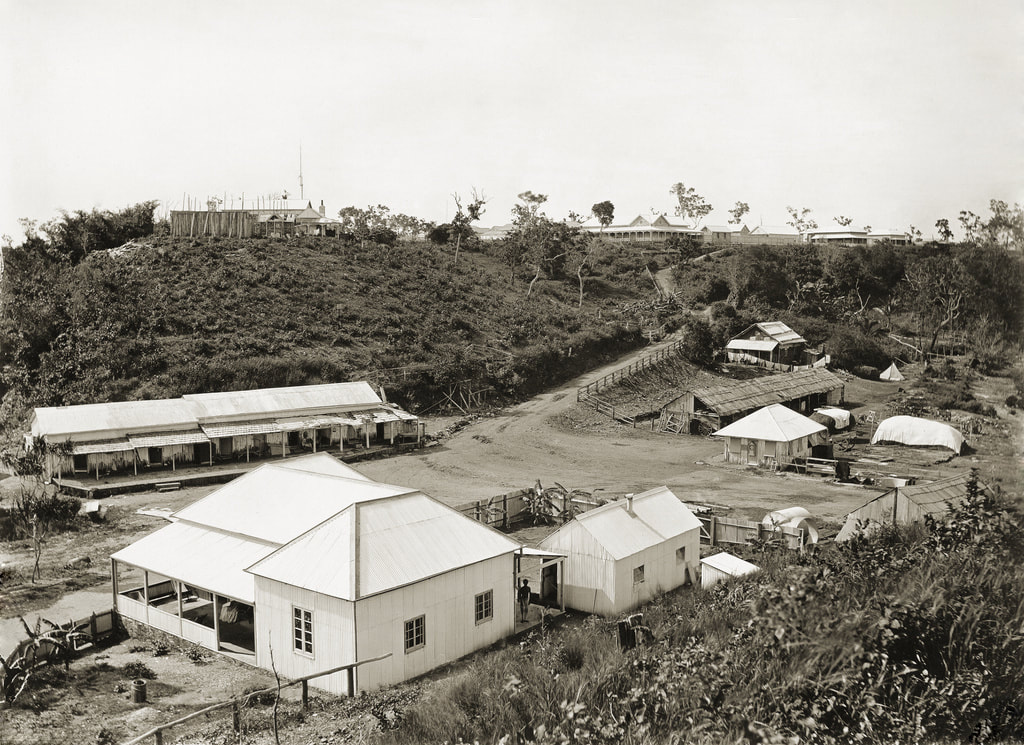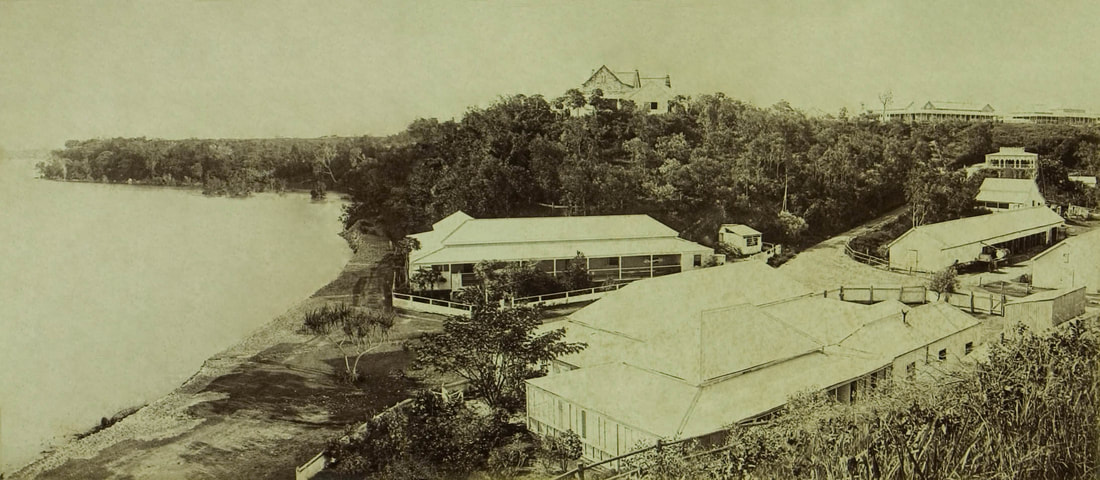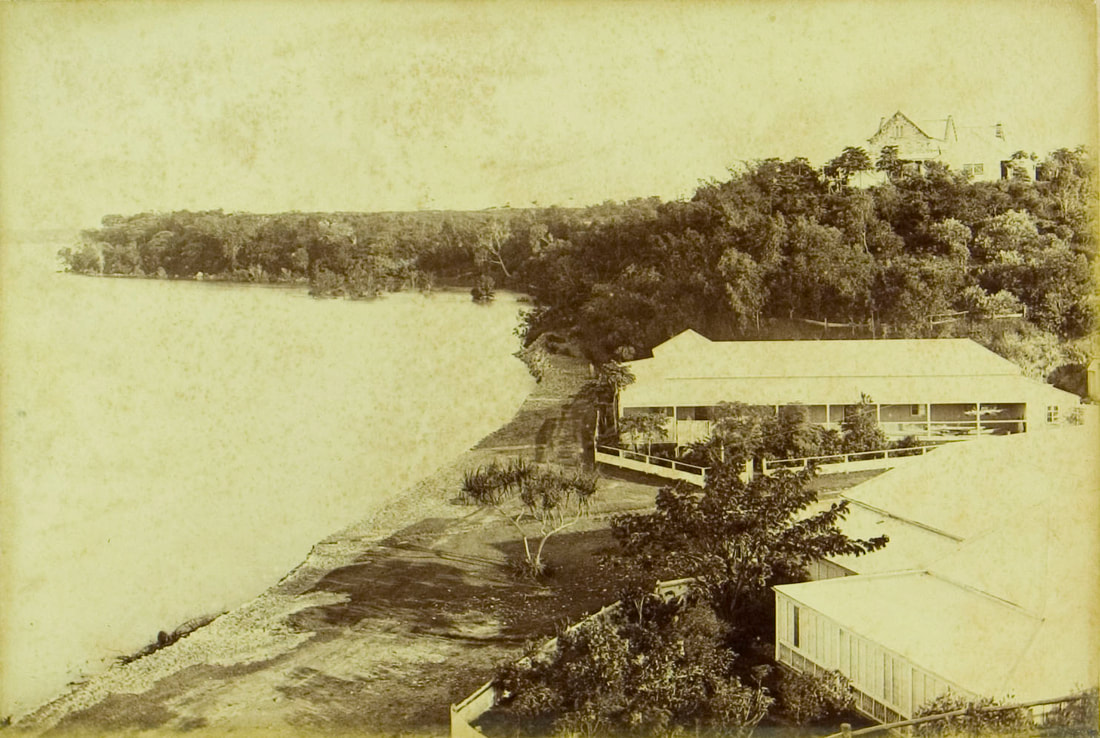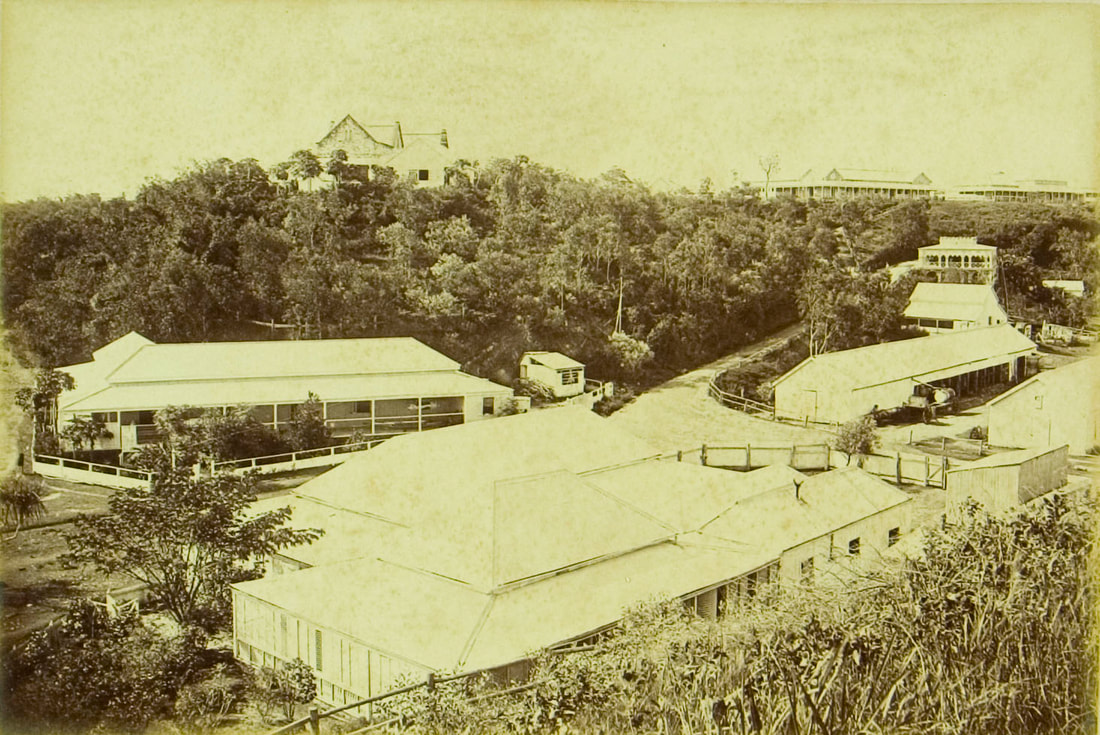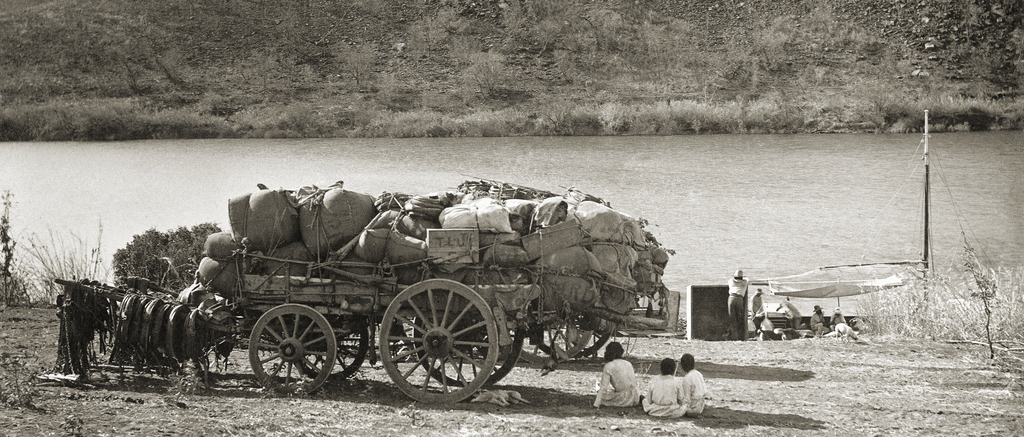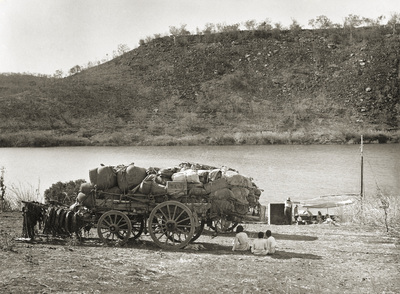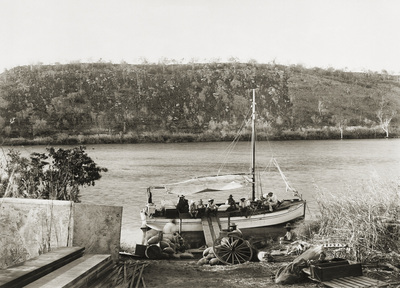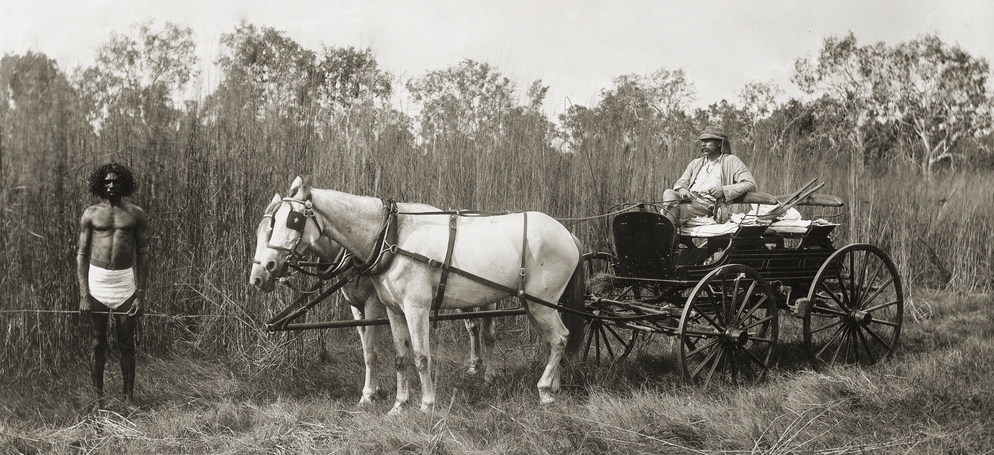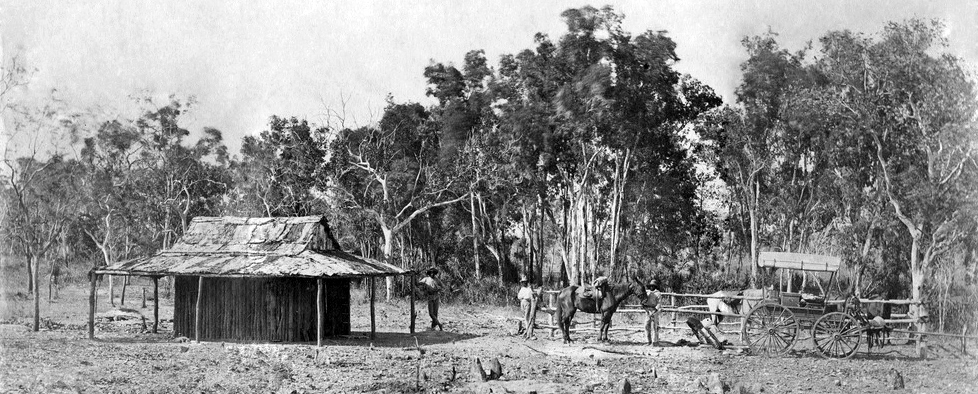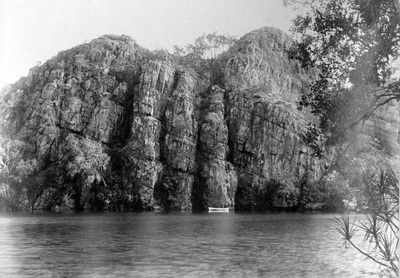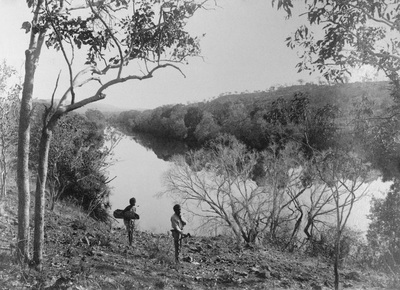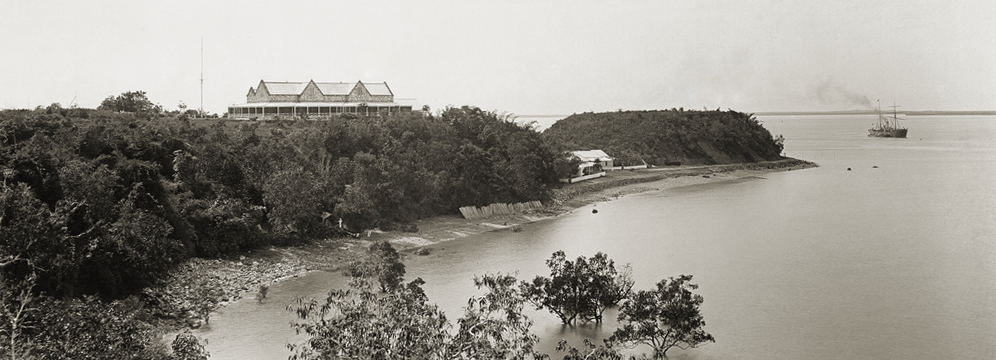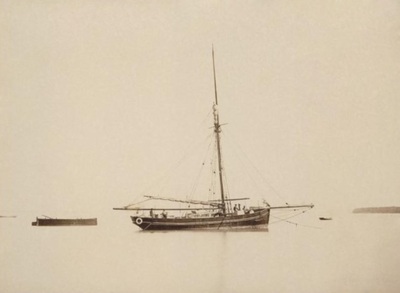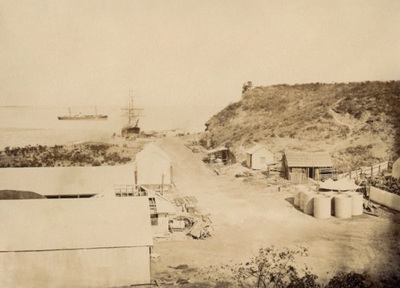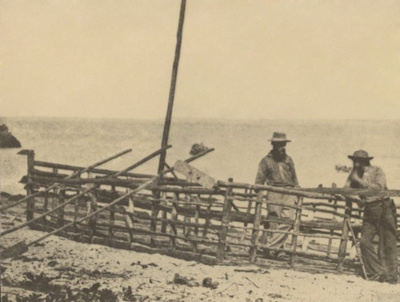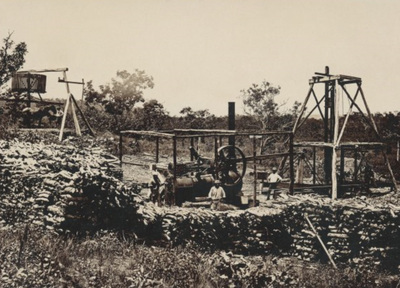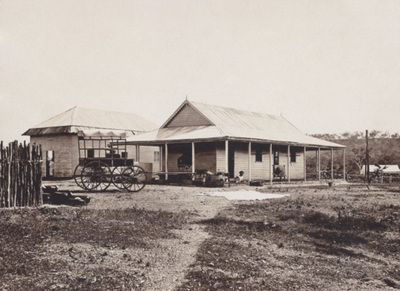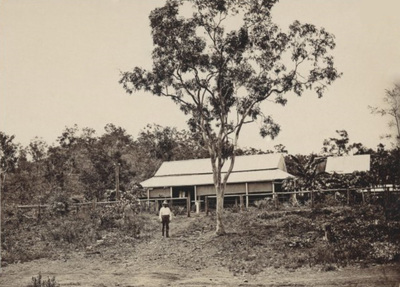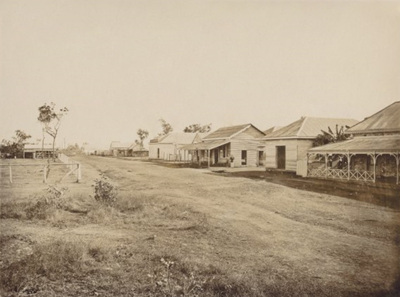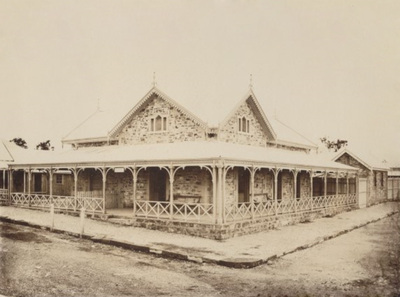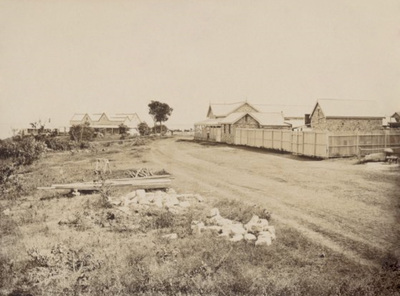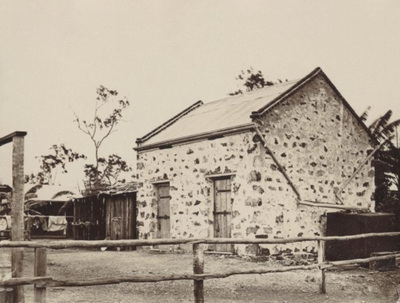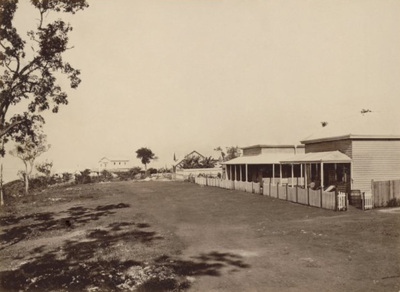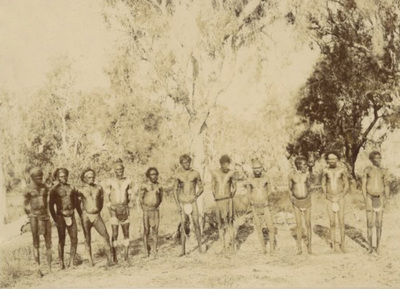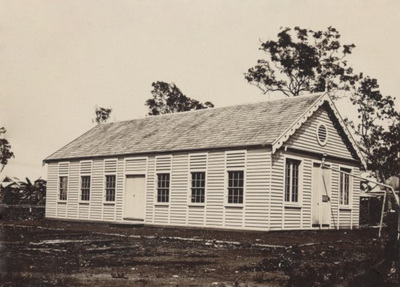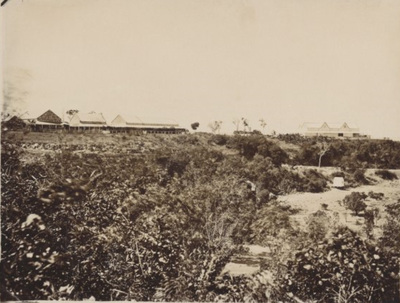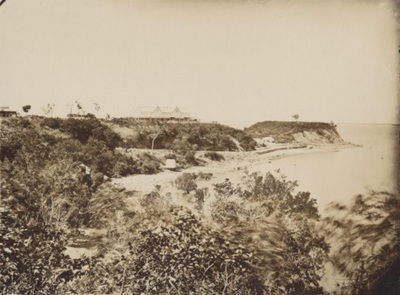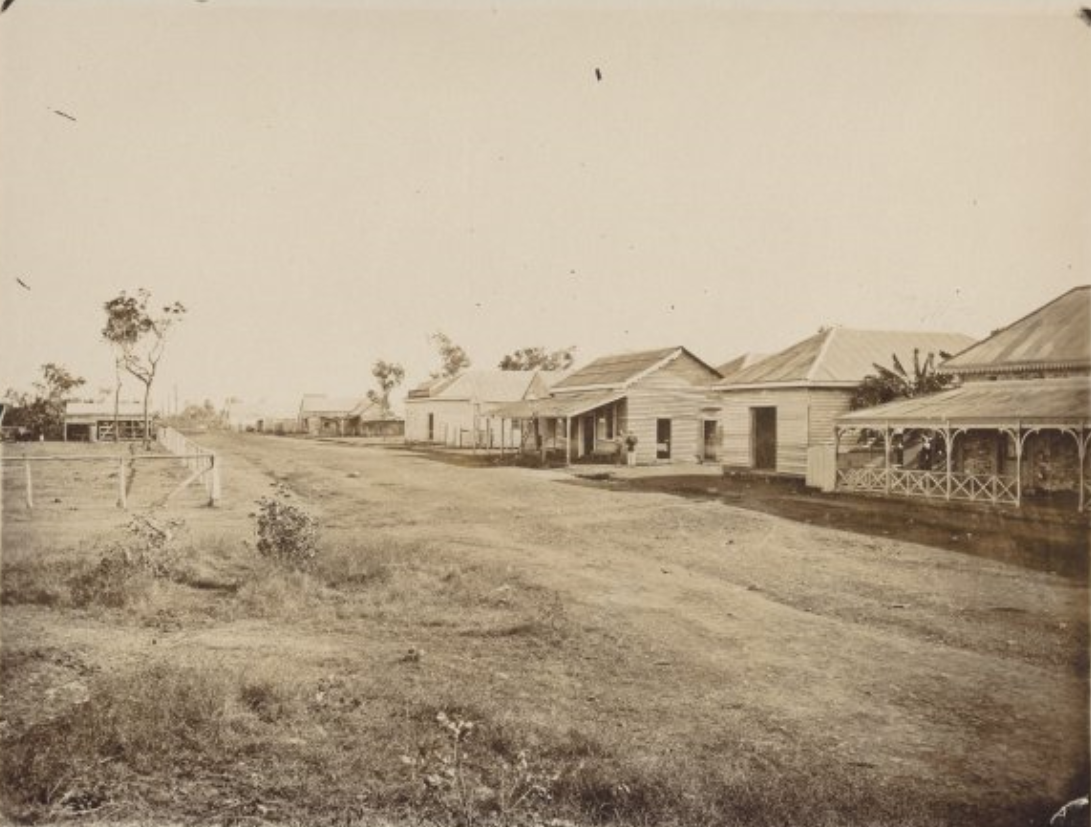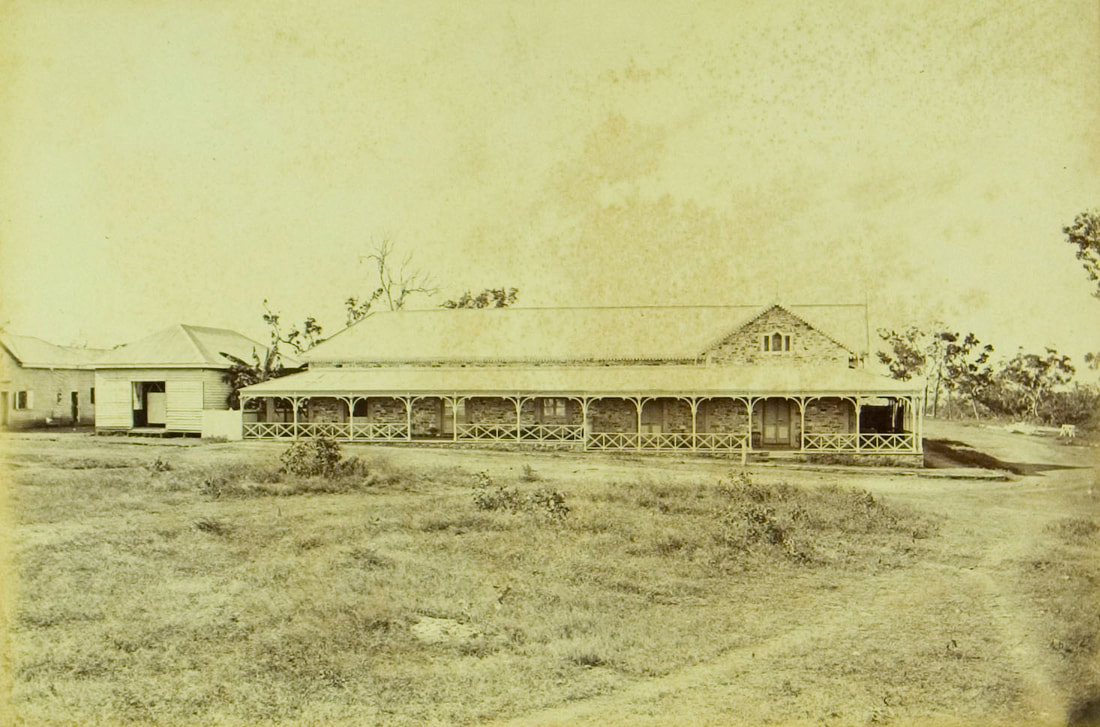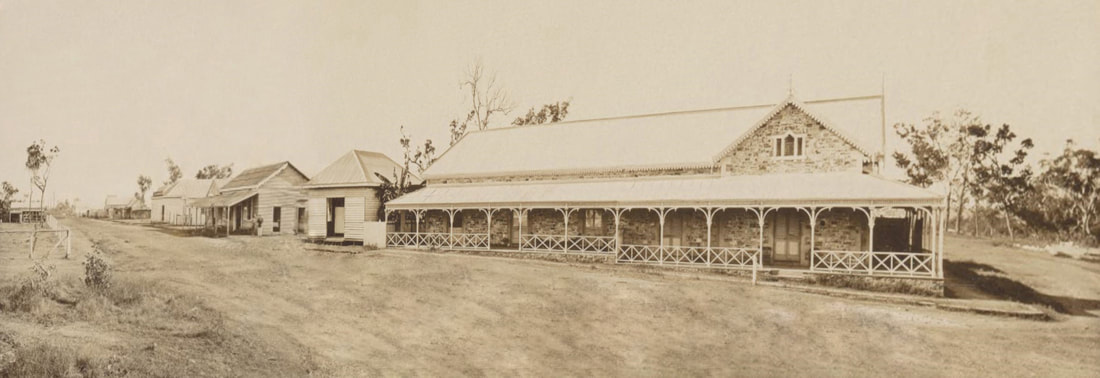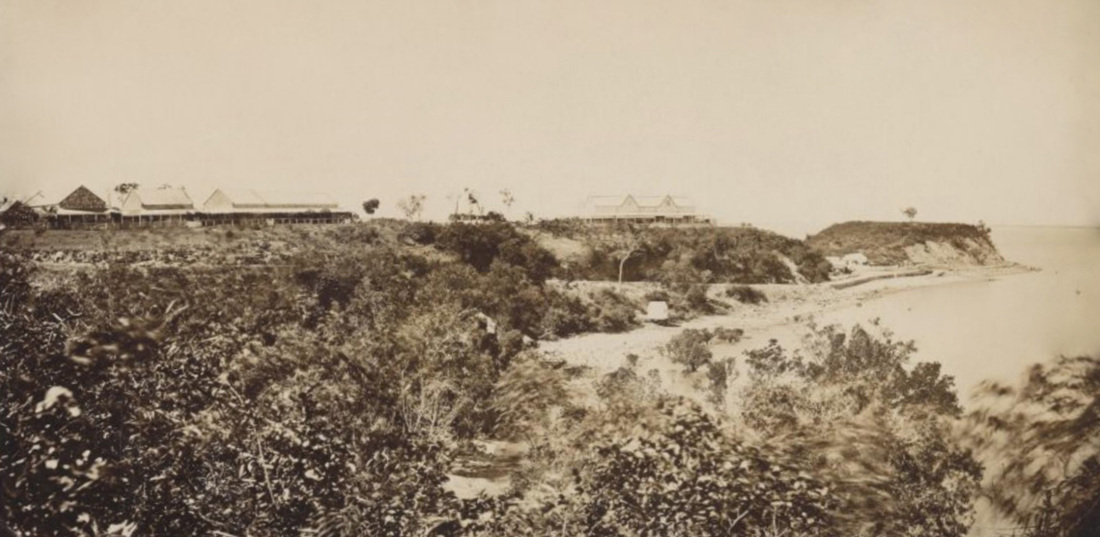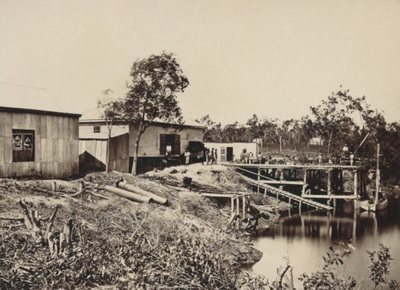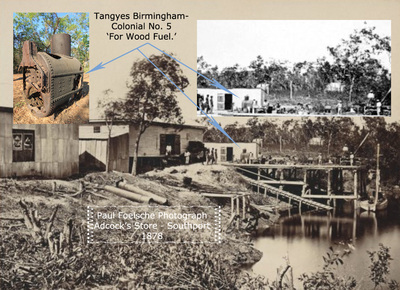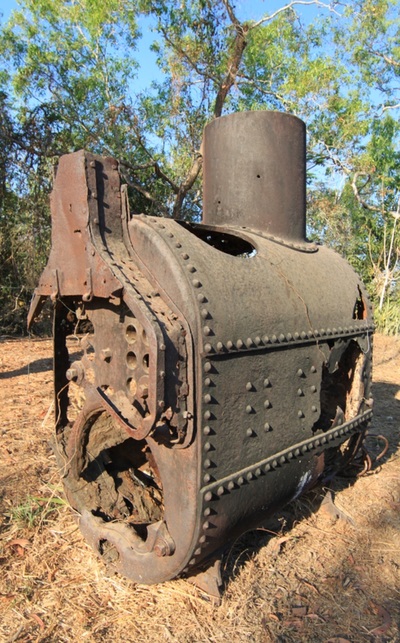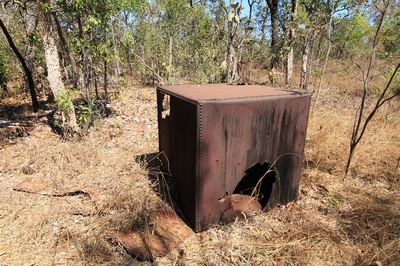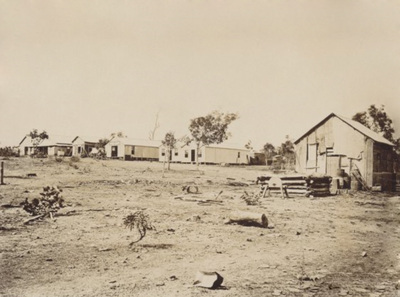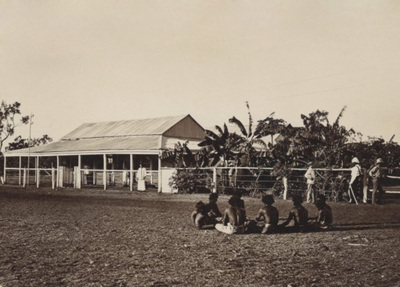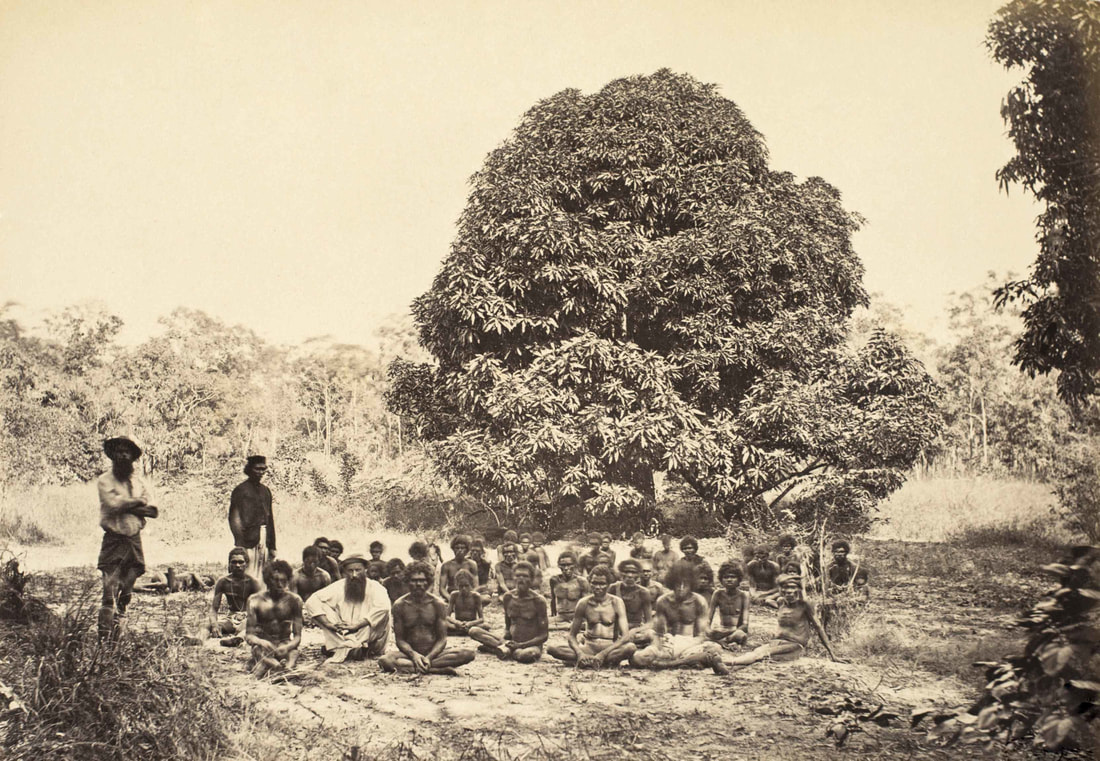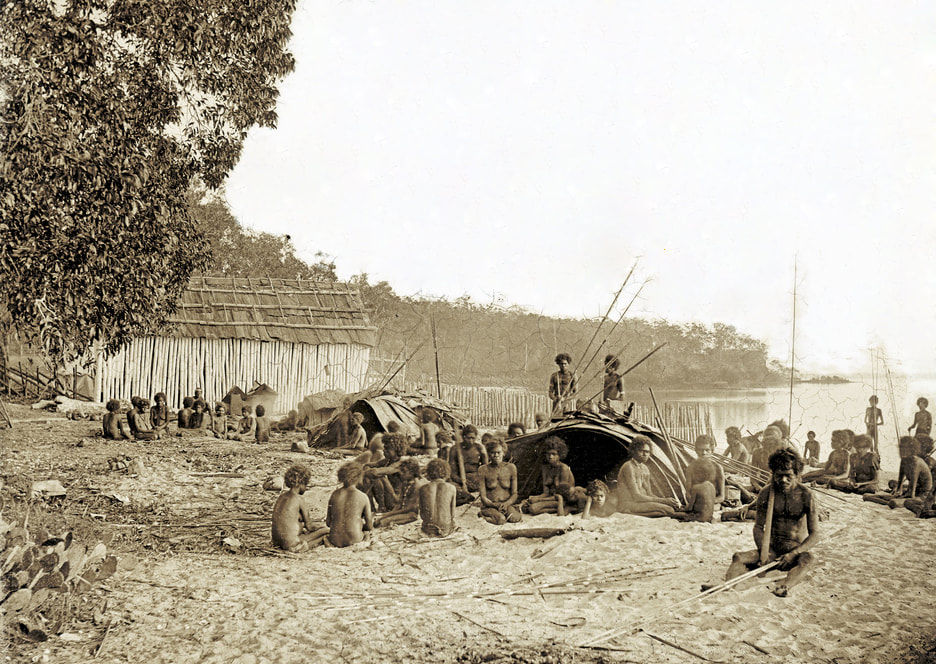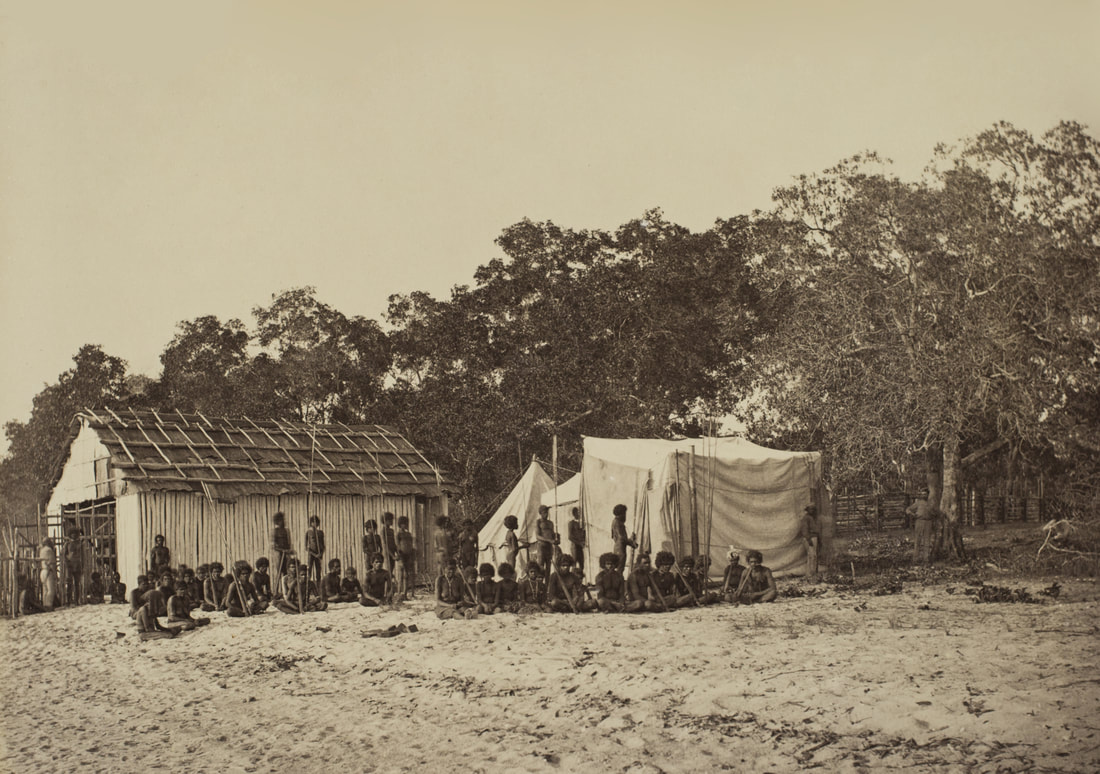Inspector Paul Foelsche - NT Images 1870 - 1914
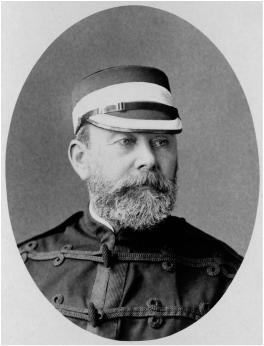 Paul Foelsche SLSA B-6968
Paul Foelsche SLSA B-6968
R. J. Noye, 'Foelsche, Paul Heinrich Matthias (1831–1914)', Australian Dictionary of Biography, ANU.
Paul Foelsche was born on 30 March 1831 at Moorburg, near Hamburg, Germany, son of Matthias Foelsche. At 18 he enlisted in a German Hussar Regiment and at 25 migrated to South Australia. In November 1856 he was appointed trooper third class in the Mounted Police. He was transferred to Strathalbyn where on 5 January 1860 he married Charlotte Georgina Smith. He devoted much time to firearms and as an expert in colouring stocks and barrels his services were in great demand by local volunteer corps. While at Strathalbyn he was appointed sub-inspector in charge of the newly-formed Northern Territory Mounted Police. In January 1870 he arrived in the Northern Territory where he spent his remaining years apart from brief visits to Adelaide in 1884 and China in 1897. After establishing a modest home in Palmerston (Darwin) Foelsche sent for his wife and two daughters. He adapted well to the difficult environment and set an example to the settlers. He remained cheerful and optimistic when others were complaining of hardship and sacrifice. As 'the very best man that could have been selected for the position at that time' he became a great force in the community. He was an excellent conversationalist, speaking and understanding English as well as his German and was very popular. He became 'a perfect encyclopaedia on Northern Territory affairs and people'. He also won repute as a dentist and had a large collection of the best dental instruments.
As a policeman Foelsche was a 'veritable sleuthhound of the law', with a natural detective instinct and mental powers that made him dreaded by criminals. His knowledge of the law was such that he was said to be the best lawyer outside the South Australian Bar. He had a keen intellect, studious habits and a retentive memory. When stationed at Strathalbyn he was often selected for special duty where exceptional tact and discretion were required. Police Commissioner George Hamilton (1812-1883) considered him one of the most capable men in the police force, and Lord Kintore, governor of South Australia, described him as intelligent and efficient. In pursuit of his police duties Foelsche was unrelenting and displayed exceptional energy and courage when he led the search for native murderers. His cunning stratagems invariably led to the apprehension of suspects. Soon after he arrived in the Northern Territory he realized the difficulty in administering justice to the natives and made a systematic study of Aboriginal customs and language. On 2 August 1881 his authoritative paper, 'Notes on the Aborigines of North Australia', was read to the Royal Society of South Australia.
About 1873 Foelsche succeeded Captain Samuel White Sweet as leading photographer of the Northern Territory where his work became the main pictorial record of natives, scenery and industries for the next twenty years. At his own expense he distributed thousands of his photographs to prominent persons and societies at home and abroad, spreading his belief in the potential of the northern colony. Anthropological studies sent to Germany earned him the gratitude of the Kaiser, who presented him with a gold hunting watch and signed portrait. As late as 1920 copies of Foelsche's Aboriginal studies were being sent to universities overseas. Many of his original prints survive in Australian archives, and many negatives are in the Noye collection (PLSA) and in the South Australian Museum.
Foelsche was a useful botanical collector and correspondent for Ferdinand Mueller, who named in his honour Euc. Foelscheana, a well-known Northern Territory tree. In the Territory a mount, river, headland and street in Darwin bear his name. A notable Freemason, he helped found the Port Darwin Lodge which was named for him. He retired from the police force in January 1904, and was awarded the Imperial Service Order. In his last two years he was confined to his chair and suffered much pain before he died on 31 January 1914. (http://adb.anu.edu.au/biography/foelsche-paul-heinrich-matthias-3543/text5467)
Paul Foelsche was born on 30 March 1831 at Moorburg, near Hamburg, Germany, son of Matthias Foelsche. At 18 he enlisted in a German Hussar Regiment and at 25 migrated to South Australia. In November 1856 he was appointed trooper third class in the Mounted Police. He was transferred to Strathalbyn where on 5 January 1860 he married Charlotte Georgina Smith. He devoted much time to firearms and as an expert in colouring stocks and barrels his services were in great demand by local volunteer corps. While at Strathalbyn he was appointed sub-inspector in charge of the newly-formed Northern Territory Mounted Police. In January 1870 he arrived in the Northern Territory where he spent his remaining years apart from brief visits to Adelaide in 1884 and China in 1897. After establishing a modest home in Palmerston (Darwin) Foelsche sent for his wife and two daughters. He adapted well to the difficult environment and set an example to the settlers. He remained cheerful and optimistic when others were complaining of hardship and sacrifice. As 'the very best man that could have been selected for the position at that time' he became a great force in the community. He was an excellent conversationalist, speaking and understanding English as well as his German and was very popular. He became 'a perfect encyclopaedia on Northern Territory affairs and people'. He also won repute as a dentist and had a large collection of the best dental instruments.
As a policeman Foelsche was a 'veritable sleuthhound of the law', with a natural detective instinct and mental powers that made him dreaded by criminals. His knowledge of the law was such that he was said to be the best lawyer outside the South Australian Bar. He had a keen intellect, studious habits and a retentive memory. When stationed at Strathalbyn he was often selected for special duty where exceptional tact and discretion were required. Police Commissioner George Hamilton (1812-1883) considered him one of the most capable men in the police force, and Lord Kintore, governor of South Australia, described him as intelligent and efficient. In pursuit of his police duties Foelsche was unrelenting and displayed exceptional energy and courage when he led the search for native murderers. His cunning stratagems invariably led to the apprehension of suspects. Soon after he arrived in the Northern Territory he realized the difficulty in administering justice to the natives and made a systematic study of Aboriginal customs and language. On 2 August 1881 his authoritative paper, 'Notes on the Aborigines of North Australia', was read to the Royal Society of South Australia.
About 1873 Foelsche succeeded Captain Samuel White Sweet as leading photographer of the Northern Territory where his work became the main pictorial record of natives, scenery and industries for the next twenty years. At his own expense he distributed thousands of his photographs to prominent persons and societies at home and abroad, spreading his belief in the potential of the northern colony. Anthropological studies sent to Germany earned him the gratitude of the Kaiser, who presented him with a gold hunting watch and signed portrait. As late as 1920 copies of Foelsche's Aboriginal studies were being sent to universities overseas. Many of his original prints survive in Australian archives, and many negatives are in the Noye collection (PLSA) and in the South Australian Museum.
Foelsche was a useful botanical collector and correspondent for Ferdinand Mueller, who named in his honour Euc. Foelscheana, a well-known Northern Territory tree. In the Territory a mount, river, headland and street in Darwin bear his name. A notable Freemason, he helped found the Port Darwin Lodge which was named for him. He retired from the police force in January 1904, and was awarded the Imperial Service Order. In his last two years he was confined to his chair and suffered much pain before he died on 31 January 1914. (http://adb.anu.edu.au/biography/foelsche-paul-heinrich-matthias-3543/text5467)
The South Australian Advertiser (Adelaide, SA) Thursday 2 December 1869
The following troopers have been appointed to go to the Northern Territory :— Sub-Inspector P. Foelsche, Corporal F. Drought, Troopers P. Kappler, W. G. Stretton, J. Masson, H. J. Smith, and H. J. Boord. Dr. Millner will also accompany the party.
We are informed, upon reliable authority, that twenty men on Wednesday, professing to be unemployed and destitute, refused to go out to some Government contractors' work, alleging as a reason that they must stop in town till the municipal elections were over.
In reply to enquiries which have been addressed to us, we may state that small parcels may be sent by the Gulnare to members of the Northern Territory Expedition. It is necessary, however, that an order for shipment, should be first obtained at the Crown Lands Office, and then the parcels will have to be forwarded to Mr. Newman, at the Port.
The Ballarat Star (Vic.) - Thursday 2 December 1869
The schooner Gulnare will sail to-morrow for the Northern Territory, with Dr Millner, Inspector Foelsche, and six police constables.
The following troopers have been appointed to go to the Northern Territory :— Sub-Inspector P. Foelsche, Corporal F. Drought, Troopers P. Kappler, W. G. Stretton, J. Masson, H. J. Smith, and H. J. Boord. Dr. Millner will also accompany the party.
We are informed, upon reliable authority, that twenty men on Wednesday, professing to be unemployed and destitute, refused to go out to some Government contractors' work, alleging as a reason that they must stop in town till the municipal elections were over.
In reply to enquiries which have been addressed to us, we may state that small parcels may be sent by the Gulnare to members of the Northern Territory Expedition. It is necessary, however, that an order for shipment, should be first obtained at the Crown Lands Office, and then the parcels will have to be forwarded to Mr. Newman, at the Port.
The Ballarat Star (Vic.) - Thursday 2 December 1869
The schooner Gulnare will sail to-morrow for the Northern Territory, with Dr Millner, Inspector Foelsche, and six police constables.
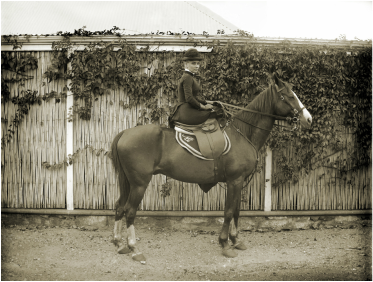 Mary Foelsche (daughter) 1880 SLSA B-72248
Mary Foelsche (daughter) 1880 SLSA B-72248
The Gulnare, under command of Captain Samuel Sweet, sailed from Port Adelaide with supercargo Paul Foelsche, one constable and five troopers in company with Dr. Millner. She carried stores for Goyder's Party of 150 men surveying the town of Palmerston at Port Darwin.
The official Goyder Party photographer was Joseph Brooks whose stereoscope images captured the events for posterity, public support and potential investors. Many of these men would remain at Port Darwin as the Northern Territory's first white residents and for some, such as the British Australian Telegraph (BAT) Company employees and Paul Foelsche, their wives and families would join them to form the foundation population.
Between Brooks, Sweet & Foelsche (from c1873) the formative years of the NT were etched onto glass plate and Australian history. After 44 years in the NT with only two brief holidays south and sharing the title of oldest Territorian with Mrs Tuckwell - Paul Foelsche S.M. I.S.O. died at Port Darwin in 1914 at the age of 83 - a universally admired and respected officer, founding father, Freemason and photographer. He was survived by two daughters - his wife Charlotte having passed away many years before.
The official Goyder Party photographer was Joseph Brooks whose stereoscope images captured the events for posterity, public support and potential investors. Many of these men would remain at Port Darwin as the Northern Territory's first white residents and for some, such as the British Australian Telegraph (BAT) Company employees and Paul Foelsche, their wives and families would join them to form the foundation population.
Between Brooks, Sweet & Foelsche (from c1873) the formative years of the NT were etched onto glass plate and Australian history. After 44 years in the NT with only two brief holidays south and sharing the title of oldest Territorian with Mrs Tuckwell - Paul Foelsche S.M. I.S.O. died at Port Darwin in 1914 at the age of 83 - a universally admired and respected officer, founding father, Freemason and photographer. He was survived by two daughters - his wife Charlotte having passed away many years before.
NT Administrator's Report 1914
State Library of South Australia - Views of Northern Territory [B 24187]
|
SLSA B-6442 Darwin Collection c1890
[General description] The jetty makes a curved sweep out to its end where there are three ships berthed. Two other ships are seen further out at sea. Ships from left to right are 1: S.S. 'Tsinan', China Navigation Company, 1459 tons reg. from Sydney; 2: Ship 'Falkland Hill' from Hamburg, 1429 tons reg. with cement for Messrs. C & E Millar; 3: S.S. 'Menmuir', Eastern and Australian Company, 1247 tons reg. from Sydney; 4: S.S. 'Catterthun', Eastern and Australian Company, 1406 tons reg. from Sydney; 5: S.S. 'Chingtu' China Navigation Company, 1459 tons reg. from Hong Kong. *The Eastern and Australian Company's hulk 'Belle of South Esk', 540 tons reg. is receiving cargo between Nos. 3 and 4. [On back of photograph] 'The old railway jetty, Port Darwin / In the nineties (before August 8th 1895, the date of the wreck of the 'Catterthun') / Rebuilt 1900-1903 after it had been 'practically toppled into the sea' as a result of attacks of a marine borer (Teredo navalis)'. |

